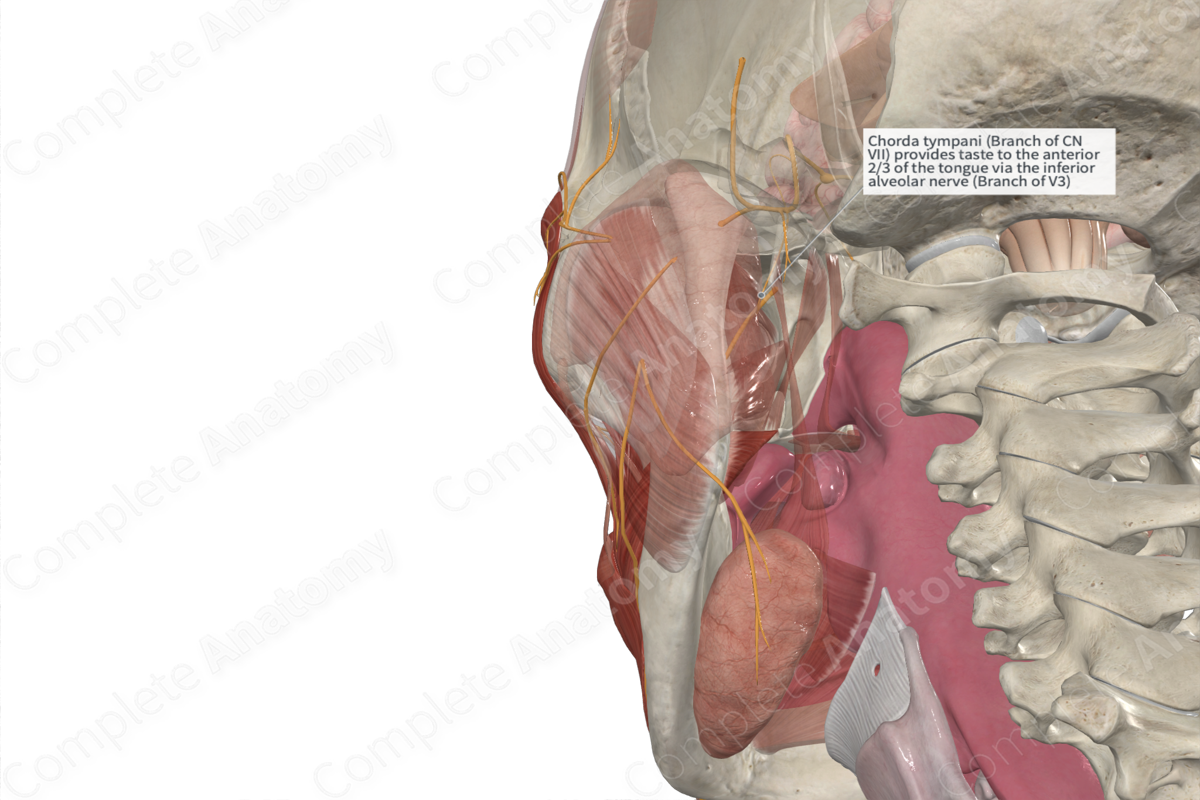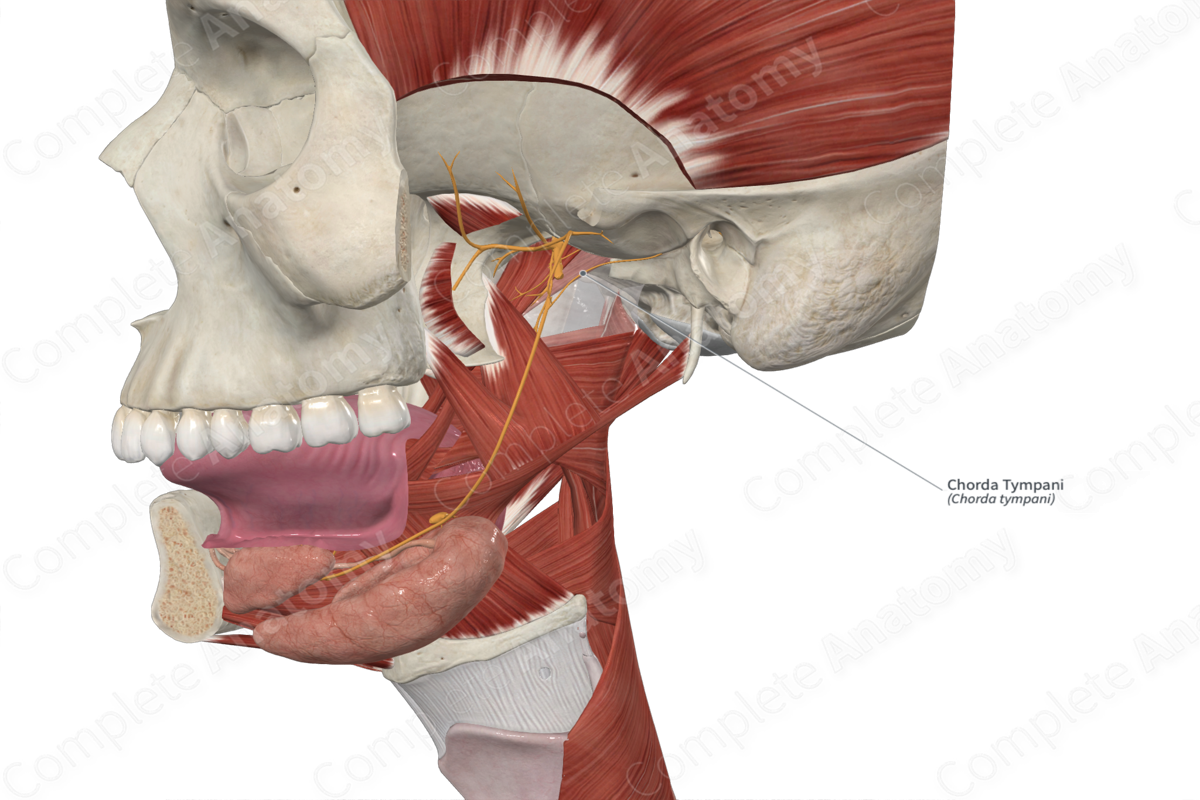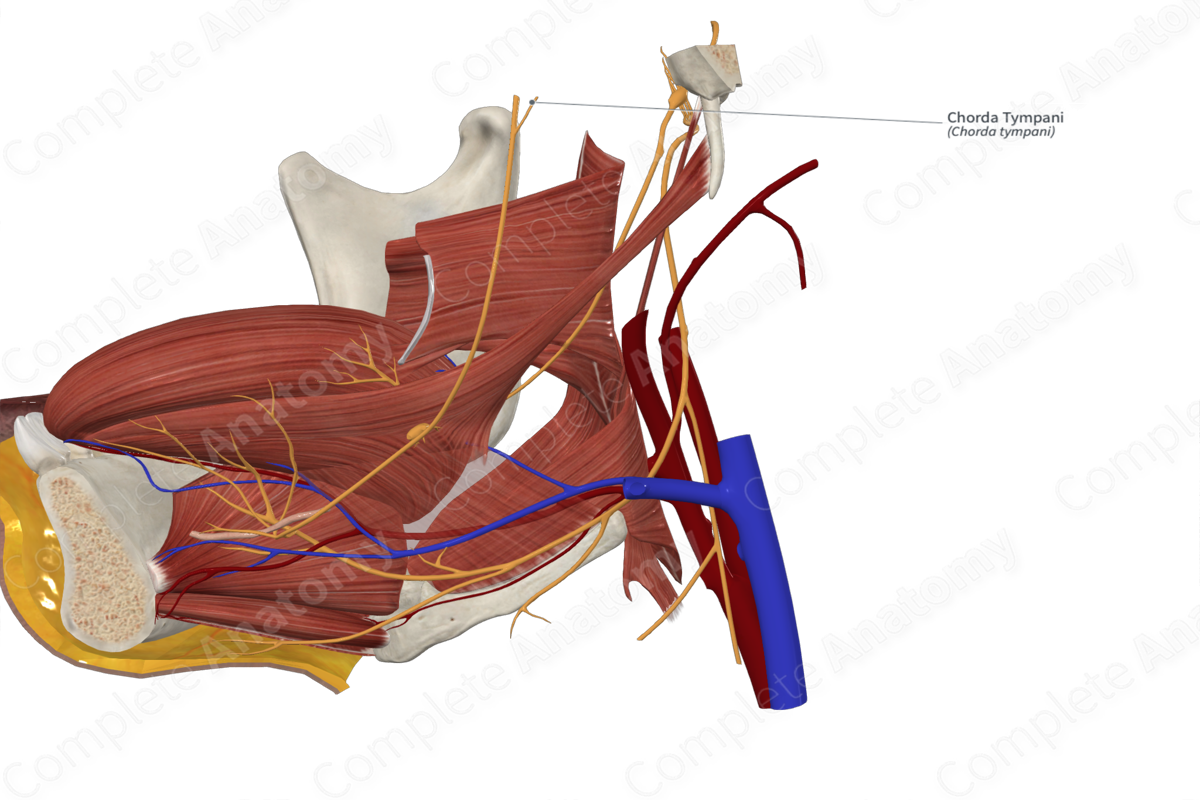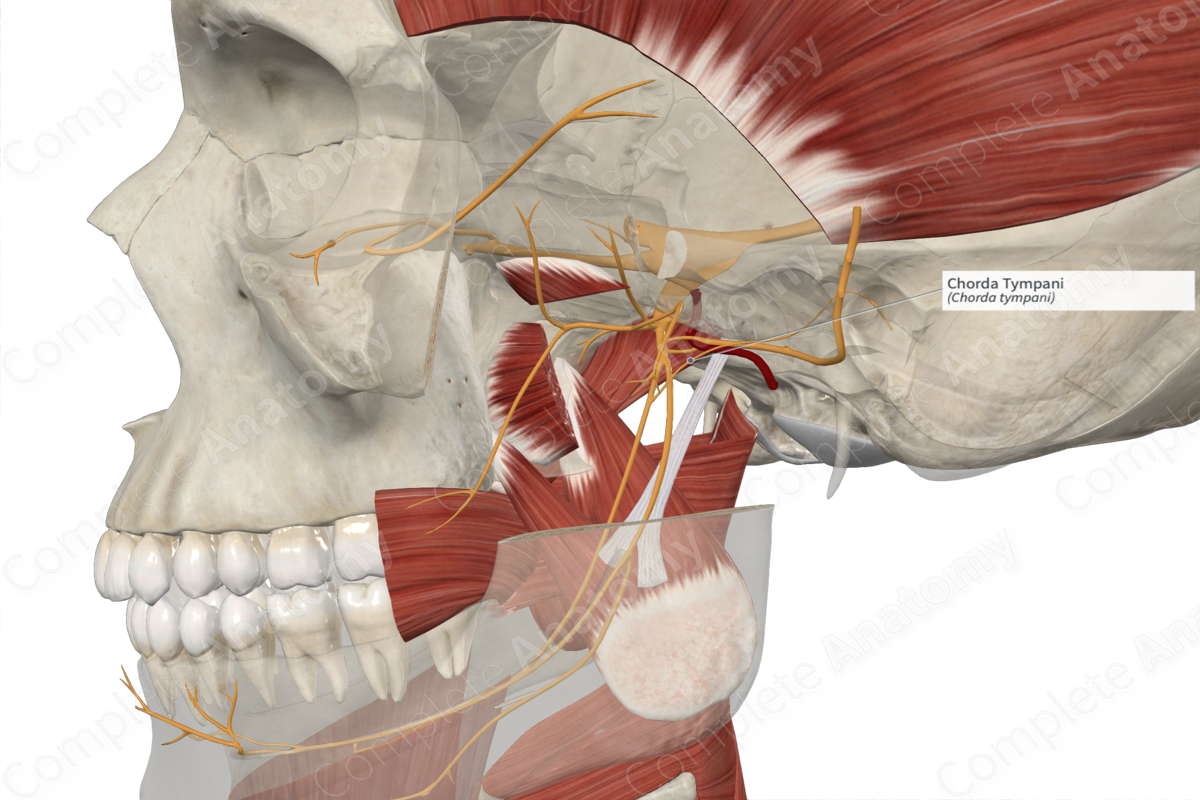
Quick Facts
Origin: Facial nerve.
Course: Runs through the middle ear between the incus and malleus. After passing back into the temporal bone, it exits into the infratemporal fossa via the petrotympanic fissure before merging with the lingual nerve.
Branches: None.
Supply: Sensory: Conveys special sense taste fibers from the anterior two thirds of the tongue; Parasympathetic: preganglionic parasympathetic fibers from the superior salivatory nucleus to the lingual nerve and submandibular ganglion.
Related parts of the anatomy
Origin
The chorda tympani is a major branch of the facial nerve that originates in the facial canal of the temporal bone.
Its preganglionic parasympathetic fibers have cell bodies located in the superior salivatory nucleus and those of its special sense taste fibers are located in the geniculate ganglion.
Course
The chorda tympani has a complicated course. It originates in the facial canal in the temporal bone as a branch off the facial nerve. From here it passes through bone to enter the posterior tympanic cavity where it runs anteriorly, passing between the incus and malleus. It exits the anterior aspect of the tympanic cavity, passing through temporal bone, and exiting via the petrotympanic fissure to reach the infratemporal fossa. In this fossa, the chorda tympani runs obliquely, anteriorly, and inferiorly before meeting and fusing with the lingual nerve along the deep surface of the lateral pterygoid muscle.
Branches
There are no named branches.
Supplied Structures
The chorda tympani is a mixed nerve conveying sensory and parasympathetic fibers of the facial nerve to the lingual nerve.
The sensory fibers convey special sense taste information from the taste receptors of the anterior two thirds of the tongue.
The parasympathetic fibers are preganglionic and run from the superior salivatory nucleus through the chorda tympani, onto the lingual nerve, and down to the submandibular ganglion. Here they synapse onto postganglionic parasympathetic neurons that will innervate the submandibular gland, sublingual gland, and small glands of the oral mucosa.
List of Clinical Correlates
—Xerostomia
—Ageusia
—Hypogeusia
Learn more about this topic from other Elsevier products
Chorda Tympani

The canal for the chorda tympani runs from the third or mastoid segment of the facial nerve upward, laterally and anteriorly to the middle ear cavity where it runs through the middle ear just medial to the tympanic membrane.



